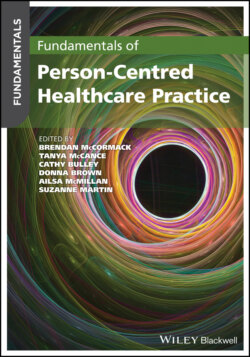Читать книгу Fundamentals of Person-Centred Healthcare Practice - Группа авторов - Страница 26
Personhood
ОглавлениеConnecting with an innate sense of ourselves as human beings with feelings, emotions, thoughts and desires is an essential component of being a person and de facto having personhood. Leibing (2008) argues that personhood is that inner feeling we have that guides us as a person. It is the sum total of all these feelings, desires, motivations and values – or what Leibing refers to as ‘that which really matters’ (Leibing 2008, p. 180). This idea of personhood equating with that which really matters to us potentially enables us to rise above discussions of physical attributes and cognition, for example. Instead, it enables a connection with our unique humanness as persons – those inner perspectives that we hold in our body and that influence our being in the world. Leibing uses the term ‘interiority’ to describe this:
The materialization of certain values in time – and the moral question of what matters to certain people.
(Leibing 2008, p. 180)
‘What matters to us’ is possibly the closest we can get to a neutral understanding of personhood and one that is connected with innate human characteristics. In reading this phrase (what matters to us), you might be reminded of the ‘what matters to me’ movement that is dominant in healthcare (refer to, for example, the ‘What Matters to Me’ day in Scotland: www.whatmatterstoyou.scot) which is an attempt by healthcare providers to understand and surface those inner perspectives that we all hold and may not easily articulate.
However, we need to be cautious in viewing this question (what matters to me/you) as the primary consideration, as Leibing argues that in diseases such as Alzheimer's, this interiority may become flattened through disease processes and the medicalisation of the associated symptoms. Accordingly, the response to the ‘what matters to you’ question may be limited, stunted, stilted or indeed may be voiced by an advocate (family member, friend, partner) and so is an interpretation of the person and who they are.
